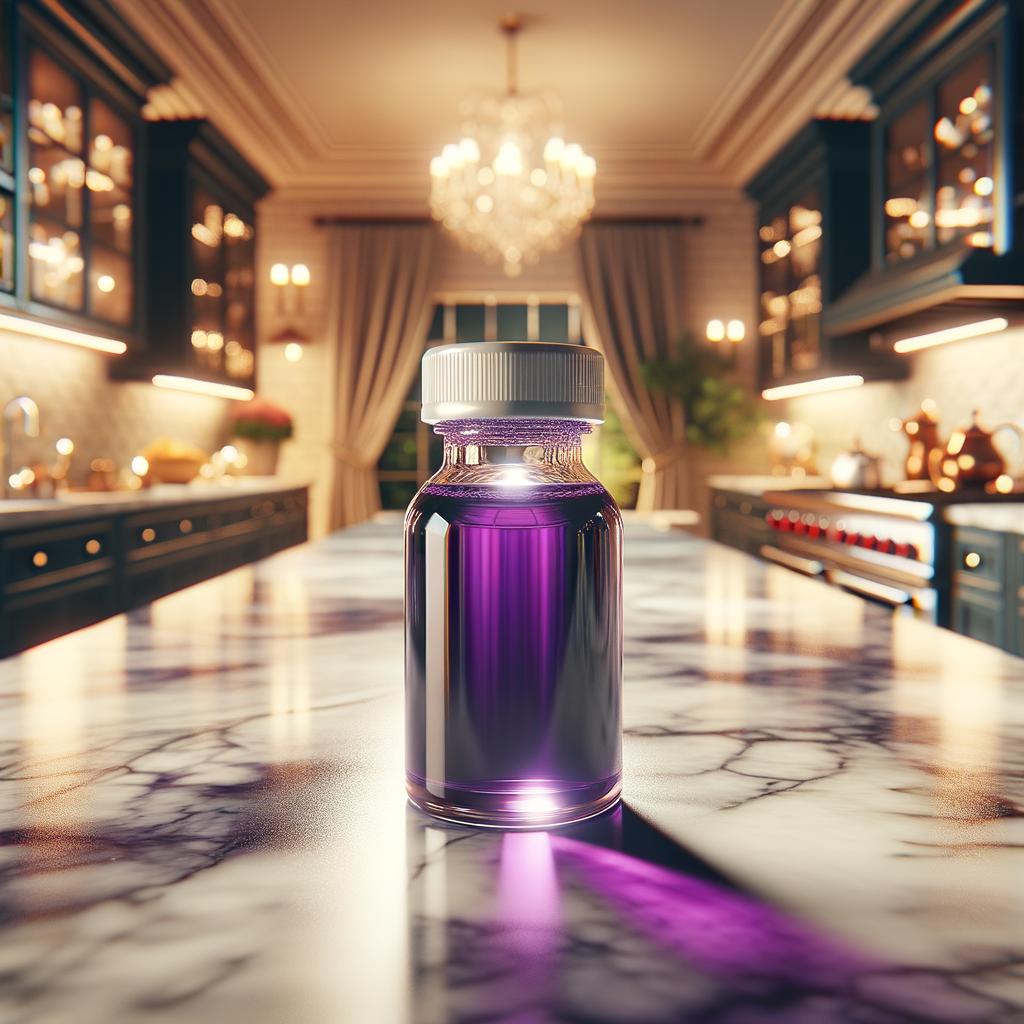Purple Food Coloring

Description
Purple food coloring, a delightful and whimsical ingredient, is a vibrant blend of blue and red hues that gives food a royal touch. It appears as a liquid or gel, with a texture that is smooth and easily blendable. The color is rich and majestic, evoking images of lavender fields, ripe plums, and magical sunsets. It has no distinct flavor of its own, allowing it to enhance the visual appeal of dishes without altering their taste. Its unique characteristic lies in its ability to transform ordinary dishes into vibrant, visually appealing masterpieces, setting it apart from natural food colors that may not provide such bold and consistent results.
Primary Uses
Purple food coloring is predominantly used in baking and confectionery, adding a pop of color to cakes, cookies, and candies. It's a key component in creating visually stunning desserts, from lavender macarons to vibrant purple yam ice cream. It's also used in beverages, giving a playful twist to cocktails and mocktails. Outside the culinary world, purple food coloring finds its use in crafts and DIY projects, like homemade playdough or vibrant slime for children.
History
The history of food coloring is as colorful as the ingredient itself. In ancient times, people used natural sources like vegetables, flowers, and minerals to color their food. However, with the advent of the industrial revolution in the 19th century, synthetic food colorings, including our majestic purple, were introduced. These synthetic colors offered a wider range of shades and consistency, revolutionizing the world of baking and confectionery. The use of purple food coloring has evolved over time, from merely being used in candies and sweets to now being a part of gourmet cuisine and artisanal baking. It's also associated with the celebration of Mardi Gras, where purple symbolizes justice.
Nutritional Information
Purple food coloring, like other synthetic food colors, does not contribute any significant nutritional value to food. It contains no vitamins, minerals, or macronutrients. However, it's worth noting that it's typically used in such small amounts that it doesn't impact the overall nutritional profile of the dish. While it's generally recognized as safe by the FDA, some individuals may have sensitivities or allergies to certain food colorings. As always, moderation is key when using any food additive. Compared to natural purple food dyes, like beetroot or purple carrot extract, synthetic purple food coloring offers a more intense color but lacks the nutritional benefits of its natural counterparts.
In the grand tapestry of culinary arts, purple food coloring is a tiny yet vibrant thread that weaves magic into our food, making it not just a feast for the palate, but also for the eyes.

